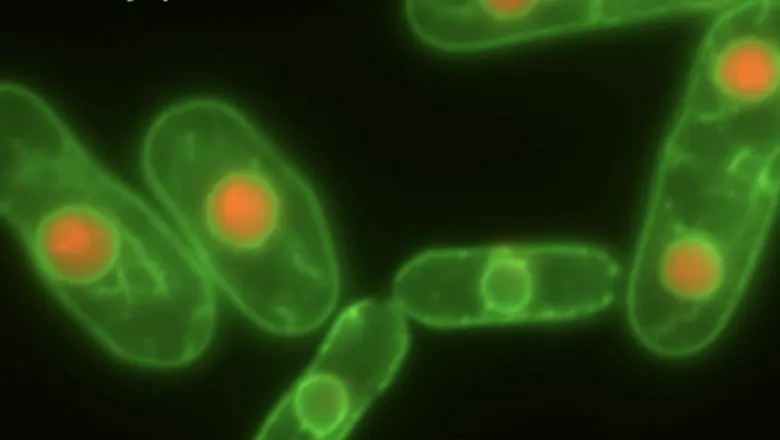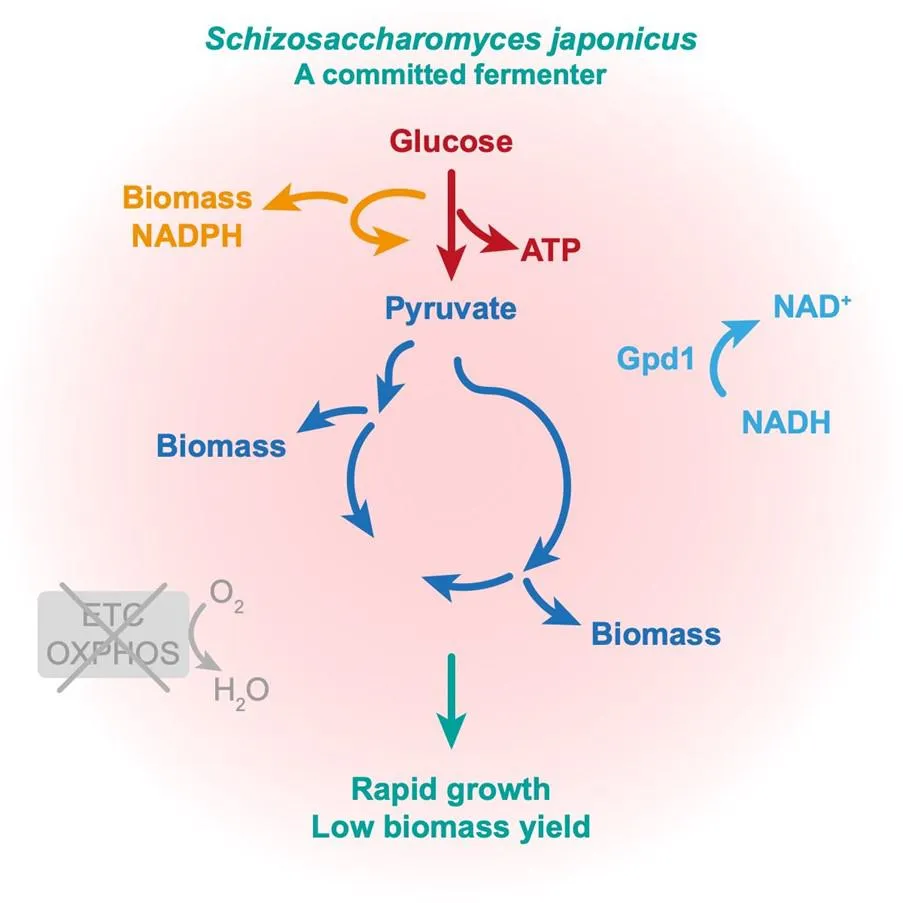Researchers use an evolutionary cell biology approach to explain how metabolism can be rewired to favour rapid growth in the absence of respiration

In a paper published today, researchers from the Randall Centre for Cell & Molecular Biophysics and The Crick use an evolutionary cell biology approach in two related fission yeasts, one which acquires energy by respiration and one which doesn't, to find the critical points at which respiration feeds into central carbon metabolism.
Establishing the rules of carbon metabolism, which produces biomass and energy, is critical for our understanding of life, from evolution to development to disease. Glycolysis is an ancient metabolic pathway which doesn't need oxygen - one molecule of glucose is used to produce two molecules of ATP, the "energy currency" of the cell, and two molecules of pyruvate, an intermediate molecule which can be metabolised further in respiration. Respiration is the most efficient way of generating ATP (overall producing up to 36 ATPs/glucose in mammals) and regenerating the electron carrier NAD+, which is required for growth.
Most eukaryotes - like animals, fungi or plants - live in environments with lots of oxygen, and respire. Yet, rapidly growing human cancer cells and single cell organisms, such as yeasts, often choose glycolysis over respiration, even when oxygen is available. We know little about the metabolic rewiring required to cope with the lack of respiration.
The authors of the new paper, published in Current Biology, show how both ATP production and NAD+ regeneration can be optimized to ensure rapid growth without respiration, and discuss possible trade-offs of choosing between respiration and glycolysis.
The researchers are convinced that understanding the plasticity of metabolism may ultimately aid in explaining organismal ecology and the evolution of higher-level cellular features, such cell size and growth rate. The principles uncovered in this study can be potentially generalized to the reprogramming of energy metabolism in human ageing and disease and point out new ways to improving microbial performance in biotechnological applications.

Read the full paper, 'Optimisation of energy production and central carbon metabolism in a non-respiring eukaryote' in Current Biology.






